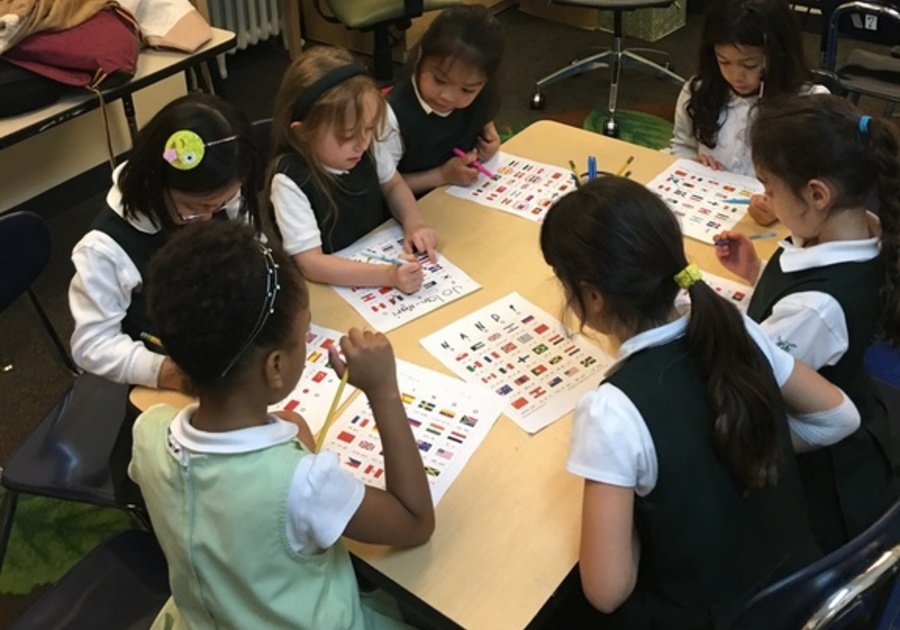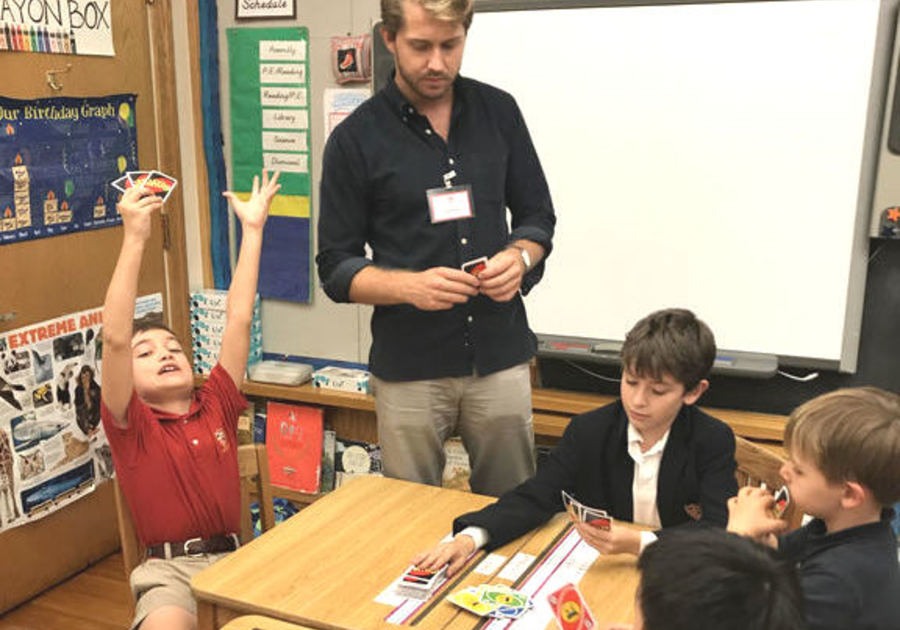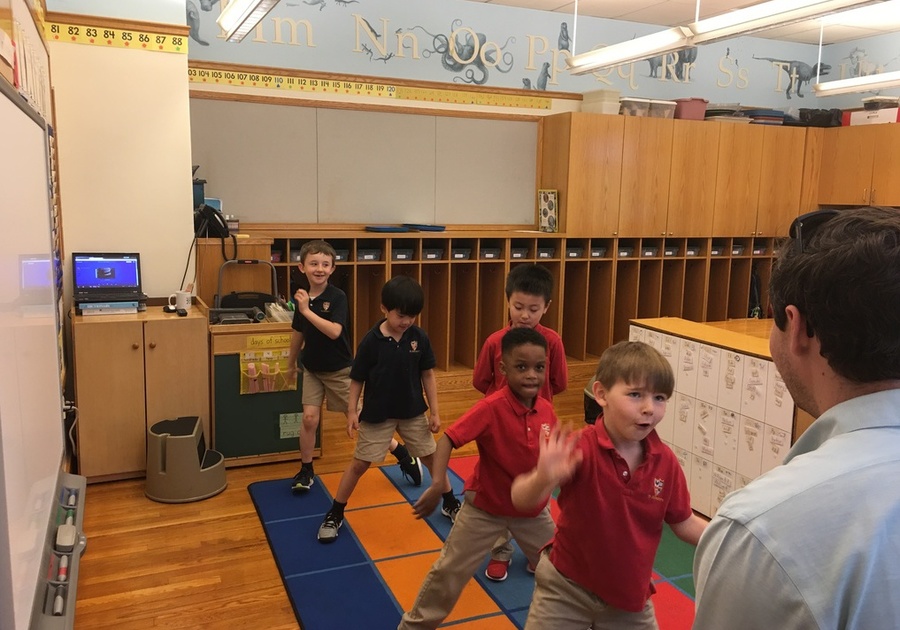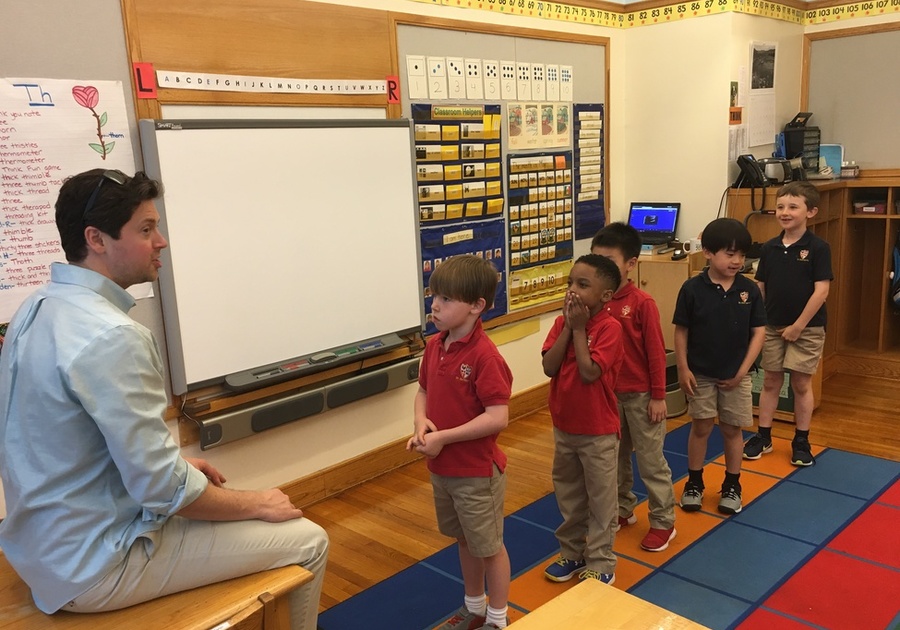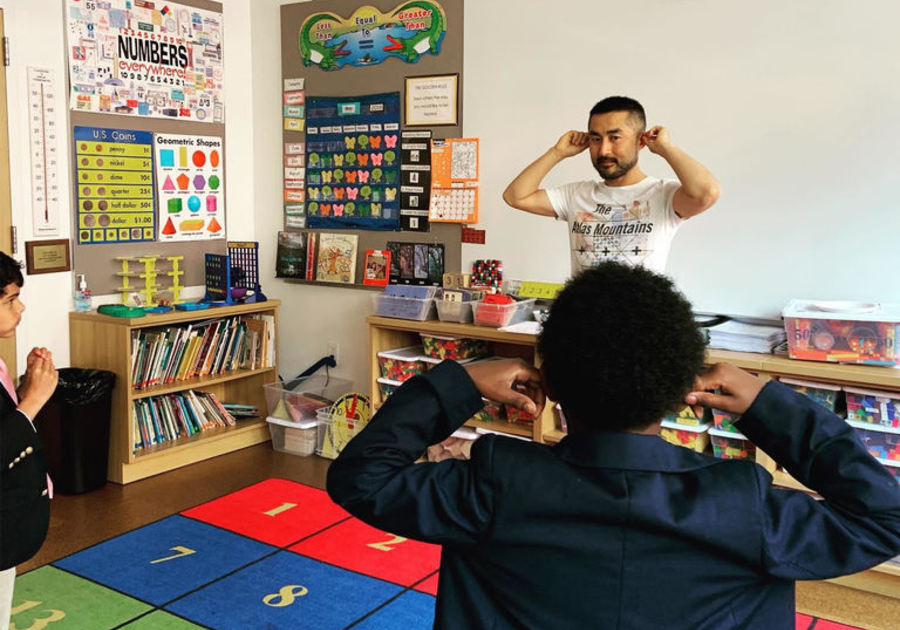Years of teaching at our Manhattan Mandarin after-school programs for K-6 students has taught us there’s nothing more effective, or more fun, than teaching our young Mandarin learners through songs and games.
There’s a good reason why many of the Mandarin songs we teach have the same melodies as old nursery rhymes the kids already know: It allows them to focus on learning only the unfamiliar Mandarin lyrics without having to worry about a new melody.
The same goes for games. We take classic games the kids already know how to play - and play them! But in Mandarin, of course. There’s no need to get delayed by learning unfamiliar rules. All that is needed is the right amount of focus to learn the required Mandarin vocabulary. This focus is easily garnered when a fun game is at hand.
Not only are these games fun, but playing them in Mandarin allows the children to implement their new language skills while acquiring them, and this doesn’t go unnoticed! It shows them the language is very learnable and can be used in familiar situations. Their consequential confidence will then make the games even more effective and fun.
Here are the top 10 games we love for teaching and learning Mandarin. We’ve ordered them roughly by level of difficulty:
Trouble
A good game for teaching the basics of counting - count aloud as you go! You can also teach the colors red, green, yellow, and blue, and how to say ‘I want’ for when the students choose their colors.
Red Light Green Light
If you have a big enough classroom or play space, Red Light Green Light is a fun game for practicing how to say the colors. Whichever student is playing the traffic light gets to choose what colors his or her traffic light is made up of. Blue light, yellow light! Everyone can learn their favorite colors.
Go Fish
Go Fish is great for improving memory and focus (‘didn’t she ask me for a Queen four turns ago?’) but also for some very key Mandarin vocab: 有 (yǒu - to have) and 没有 (méi yǒu - to not have). You must, of course, know your numbers! This is also a good game for teaching the question word 吗 (ma).
Candy Land
With Candy Land, students will have to add even more colors to their vocabulary. You can challenge the students by making them say each color aloud as they progress along the board. If this isn’t challenging enough, it’s good to begin implementing Mandarin phrases like ‘Whose turn is it?’ ‘It’s my turn’ ‘Please give me’ etc.
Bingo
Archchinese.com has a great tool that allows you to generate randomized bingo cards using any Mandarin vocabulary you input. We like to call out each word in Mandarin after first asking 谁有 (shéi yǒu - who has…?). By only printing the Mandarin words in pinyin and/or characters on the bingo board, the students have a chance to work on their pinyin reading skills and character recognition abilities. For an extra challenge, introduce new phrases like 我喜欢... (wǒ xǐhuān - ‘I like…’ and 我不喜欢... (wǒ bù xǐhuān - ‘I don’t like…) so that you can go around the room and ask students to comment on whatever vocab word was just called, whether it be a sport or a type of food. This way they can practice putting new vocabulary words into sentences.
Duck Duck Goose
We have a lot of fun playing Duck Duck Goose in Mandarin, but with unlimited vocab. For example, instead of Duck Duck Goose, we can play 猫猫狗 (māo māo gǒu - ‘cat cat dog’), or any other combination of words the students want to learn how to say. This is also fun to play with counting. Pick a number that is relatively challenging for the student to count up to, and when that number is reached, run!
Uno
Uno is, of course, good for practicing colors and numbers. Uno Emoji adds good vocabulary pertaining to emotions and expressions. Uno Dare is a great way to learn some new verbs. Uno Dos is great for doing math in Mandarin. The possibilities seem endless with the Uno series!
Twister
With Twister, the kids can combine their color and body-parts vocabulary and now add 左 (zuǒ - left) and 友 (yòu - right) in tandem with 脚 (jiǎo - foot) and 手 (shǒu - hand). By this time we’ve taught them how to sing ‘Heads Shoulders Knees and Toes’ in Mandarin, so Twister is a cinch.
Simon Says (Teacher Says)
老师说摸你的鼻子!(lǎoshī shuō mō nǐ de bízi - ‘Teacher says touch your nose!’) Simon/Teacher Says is great for teaching body-parts vocabulary. Make sure you first hear a 老师说! (lǎoshī shuō - ‘Teacher says…’)
Guess Who
Guess Who allows the students to learn more nuanced vocabulary (i.e. 戴眼镜 - dài yǎnjìng - ‘to wear glasses’) and requires them to formulate complete sentences in order to figure out their opponent’s person: 你的人戴咖啡色的眼睛吗?(nǐ de rén dài kāfēisì de yǎnjìng ma? - ‘Does your person have brown glasses?’)
Now go have a fun class! 加油!
Harry Keyte is a private Mandarin tutor and the Managing Director at ManhattanMandarin.com
Manhattan Mandarin runs the after-school Mandarin programs at St. Bernard's, Buckley, Chapin, and many other schools across NYC, and provides private Mandarin tutoring to students of all ages and Mandarin levels.
Related articles:
 |  |  |
Macaroni Kid Lower Manhattan is the family fun go-to source for the latest and most comprehensive information in our area. Subscribe for FREE today.

